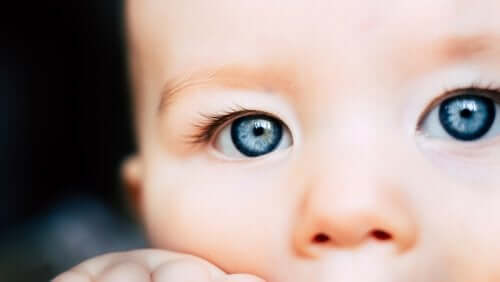Pervasive Developmental Disorders: When Acronyms Aren't Helpful

Sometimes health care professionals use acronyms to simplify certain terms and diagnoses. For example, when we refer to a pervasive developmental disorder such as PDD. Some consider this a way of hiding information or creating a sense of mystery. However, it has more to do with the need to adopt common codes and, in this case, acronyms don’t help.
At the same time, scientific publications include in their content a series of nomenclatures with the corresponding clarification to simplify reading.
Access to health information
Making the information provided to health users in health contexts simpler and more user-friendly doesn’t imply creating a tangle of concepts that are difficult to understand, or neologisms. In the case of pervasive developmental disorders, or PDD, acronyms definitely don’t help. After all, the fact that a child’s condition can be described in just three letters doesn’t minimize or detract from it.
The INECO Foundation of Argentina mentions a series of “red flags” that may signify the need to seek specialized consultation when there’s any doubt that a little one’s development doesn’t follow the usual patterns. In that sense, parents should talk to their child’s doctor if their little one fails to do the following:

- Smile in response to a smiling face.
- Make eye contact.
- Accompany with any movement of the body when being lifted.
- Respond to their name. Also, it’s difficult to get the child’s attention.
- Enjoy sharing their interests with their parents (e.g., pointing out an object they like, enjoying the shared interest).
- Play pretend games that imitate social behaviors, such as playing tea party, for example.
- Seem to follow social norms.
More information
In the same way, the following are also red flags:
- When the child speaks (since these children usually acquire language later than other children), they have an unusual way of speaking, as if it were mechanical, or monotone, or with unusual volumes.
- It’s difficult for them to use language for communicative purposes.
- They have difficulty seeking comfort and offering reassurance.
- They spend a lot of time looking at objects, moving lights, or their own hands.
- In the case of certain sounds or when there are a lot of people, they cover their ears.
- Sometimes, when they hurt or hit themselves, they seem to feel no pain.
- They make repetitive movements such as rocking their body, flapping hands, or jumping.
- The child has a good relationship with objects, sometimes spending hours spinning them.
- They need things to always be the same.
- He or she gets upset in the face of changes to routines, routes, order of objects, etc.
- They change mood suddenly for no apparent reason; they may lose control for no apparent reason.
It’s important to take into account the above information. However, the existence of one issue or another in an isolated sense isn’t necessarily a reason for concern, nor does it always suggest the presence of a developmental disorder. Therefore, their existence, far from producing anxiety in those who detect them, should be a reason for consultation.
What are, then, the pervasive developmental disorders?
According to information from the National Institute of Neurological Disorders and Stroke, of the National Institutes of Health (NIH), PDD refers to a group of disorders that involve delays in the development of socialization and communication skills. Parents may observe symptoms as early as infancy, and the typical time of onset is before three years of age.
The symptoms, according to that same source, can include the following:
- Difficulty using and understanding language
- Problems relating to people, objects and events
- Unusual play with toys and other objects
- Difficulty with changes in routines or family environment
- Repetitive body movements or behavioral patterns

Once someone identifies these symptoms or manifestations, what can they do?
From the Spanish Association of Pediatrics, the authors highlight that as the diagnosis of PDD has increased in recent years, the detection of easily identifiable clinical situations in the first year of life helps improve diagnosis and facilitate early intervention.
However, researchers add that, despite the need for early diagnosis, we don’t currently have any biological marker for PDD . Therefore, the detection of this pathology should focus its attention on the assessment of clinical behavior.
Treatment options and alternatives for pervasive developmental disorders
From the US National Institutes of Health, NIH, and regarding the existence of some treatment, their researchers point out that no one currently knows of a cure for PDD. Some medications are useful in treating specific behavioral problems, as is specialized therapy if necessary. Some children with PDD benefit from specialized classrooms with small groups and individualized instruction.
Finally, is early intervention important?
Early intervention that includes appropriate and specialized educational programs and support services plays a critical role in improving outcomes for those with PDD.
Sometimes health care professionals use acronyms to simplify certain terms and diagnoses. For example, when we refer to a pervasive developmental disorder such as PDD. Some consider this a way of hiding information or creating a sense of mystery. However, it has more to do with the need to adopt common codes and, in this case, acronyms don’t help.
At the same time, scientific publications include in their content a series of nomenclatures with the corresponding clarification to simplify reading.
Access to health information
Making the information provided to health users in health contexts simpler and more user-friendly doesn’t imply creating a tangle of concepts that are difficult to understand, or neologisms. In the case of pervasive developmental disorders, or PDD, acronyms definitely don’t help. After all, the fact that a child’s condition can be described in just three letters doesn’t minimize or detract from it.
The INECO Foundation of Argentina mentions a series of “red flags” that may signify the need to seek specialized consultation when there’s any doubt that a little one’s development doesn’t follow the usual patterns. In that sense, parents should talk to their child’s doctor if their little one fails to do the following:

- Smile in response to a smiling face.
- Make eye contact.
- Accompany with any movement of the body when being lifted.
- Respond to their name. Also, it’s difficult to get the child’s attention.
- Enjoy sharing their interests with their parents (e.g., pointing out an object they like, enjoying the shared interest).
- Play pretend games that imitate social behaviors, such as playing tea party, for example.
- Seem to follow social norms.
More information
In the same way, the following are also red flags:
- When the child speaks (since these children usually acquire language later than other children), they have an unusual way of speaking, as if it were mechanical, or monotone, or with unusual volumes.
- It’s difficult for them to use language for communicative purposes.
- They have difficulty seeking comfort and offering reassurance.
- They spend a lot of time looking at objects, moving lights, or their own hands.
- In the case of certain sounds or when there are a lot of people, they cover their ears.
- Sometimes, when they hurt or hit themselves, they seem to feel no pain.
- They make repetitive movements such as rocking their body, flapping hands, or jumping.
- The child has a good relationship with objects, sometimes spending hours spinning them.
- They need things to always be the same.
- He or she gets upset in the face of changes to routines, routes, order of objects, etc.
- They change mood suddenly for no apparent reason; they may lose control for no apparent reason.
It’s important to take into account the above information. However, the existence of one issue or another in an isolated sense isn’t necessarily a reason for concern, nor does it always suggest the presence of a developmental disorder. Therefore, their existence, far from producing anxiety in those who detect them, should be a reason for consultation.
What are, then, the pervasive developmental disorders?
According to information from the National Institute of Neurological Disorders and Stroke, of the National Institutes of Health (NIH), PDD refers to a group of disorders that involve delays in the development of socialization and communication skills. Parents may observe symptoms as early as infancy, and the typical time of onset is before three years of age.
The symptoms, according to that same source, can include the following:
- Difficulty using and understanding language
- Problems relating to people, objects and events
- Unusual play with toys and other objects
- Difficulty with changes in routines or family environment
- Repetitive body movements or behavioral patterns

Once someone identifies these symptoms or manifestations, what can they do?
From the Spanish Association of Pediatrics, the authors highlight that as the diagnosis of PDD has increased in recent years, the detection of easily identifiable clinical situations in the first year of life helps improve diagnosis and facilitate early intervention.
However, researchers add that, despite the need for early diagnosis, we don’t currently have any biological marker for PDD . Therefore, the detection of this pathology should focus its attention on the assessment of clinical behavior.
Treatment options and alternatives for pervasive developmental disorders
From the US National Institutes of Health, NIH, and regarding the existence of some treatment, their researchers point out that no one currently knows of a cure for PDD. Some medications are useful in treating specific behavioral problems, as is specialized therapy if necessary. Some children with PDD benefit from specialized classrooms with small groups and individualized instruction.
Finally, is early intervention important?
Early intervention that includes appropriate and specialized educational programs and support services plays a critical role in improving outcomes for those with PDD.
All cited sources were thoroughly reviewed by our team to ensure their quality, reliability, currency, and validity. The bibliography of this article was considered reliable and of academic or scientific accuracy.
- Asociación Española de Pediatría.
- Instituto Nacional de Salud, EEUU, NIH (por sus siglas en inglés)
This text is provided for informational purposes only and does not replace consultation with a professional. If in doubt, consult your specialist.








